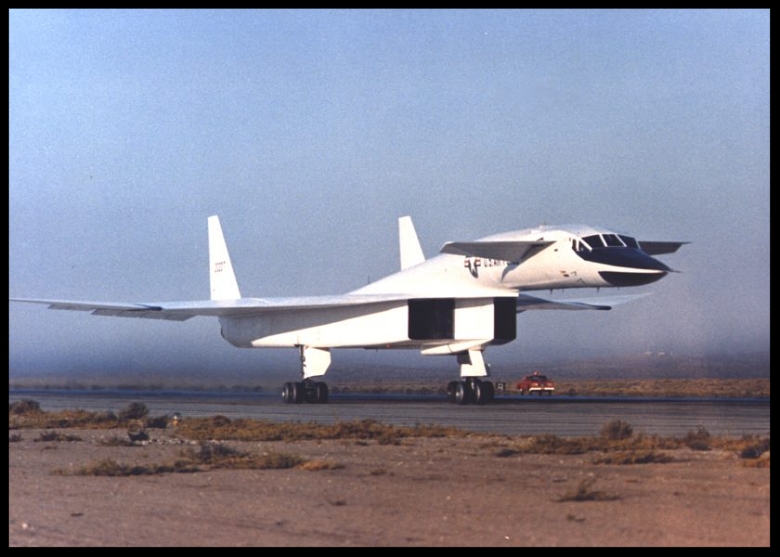MiG-25 Foxbat: The misunderstood interceptor. A lot of things have been said about the MiG-25, not many of them complimentary. This plane is often described as a crude fighter, not really good at dogfighting. A lot of the critics date back to 1967 when a Soviet pilot defected to Japan with his Foxbat, enabling US engineers to study the platform for over 60 days. The critics aimed at this platform, however, come from misunderstanding what this plane was designed to do, in the first place.
From 1957 onward, the Americans started flying regular U-2 spy/recon missions over Eastern Europe. Brits, then started to fly the Dragon Lady over the Soviet Union: The Soviets had launched Sputnik in 1957, meaning they were improving their ICBM capabilities and the West needed to collect information about that program ! The good news was that the U-2 enabled the allies to start mapping strategic Soviet bases. And the Soviets did not have any interceptors capable of reaching spy planes flying that high. The bad news was that the Soviets had radars that could track the U-2 at its cruising altitude, which was 70,000 feet. Until then, the Americans did not believe the Soviets had that capability. Worse, still, in May 1960, an American U-2 was shot down by a Soviet S-75 Dvina missile at an altitude of 70,500 feet. The American pilot survived and parachuted down into Soviet territory, sparking a diplomatic crisis.
The Soviets, however, were not out of the woods just yet ! While the U-2 could fly high, it was relatively slow. But between 1960 and 1964, the Americans started deploying and/or working on the design of 3 new planes that represented an existential threat to the USSR: First, the US started introducing the supersonic bomber Convair B-58 Hustler. The B-58 also flew at 70,000 feet, but it did so at speeds of up to Mach2 ! Bad news kept on accumulating for the Soviet Union as the Americans started working on a supersonic high altitude reconnaissance jet called the A-12 (The precursor of the SR-71). They also started working on the XB-70 Valkyrie. The Valkyrie was capable of reaching Mach3 !

The Soviets decided that they needed a pure interceptor that could fly high enough and fast enough to intercept those high altitude supersonic bombers and spy planes. Work started on the design of the MiG-25 in 1964.

By 1970, the MiG-25 was ready. And it seems it was almost a little too late ! The West had given up on high altitude bombers, as anti-aircraft missile tech had developed enough to represent a serious threat to those platforms. The West had switched instead to low altitude penetration for their strategic, nuclear capable bombers… The MiG-25 was a one trick pony. It could climb high and fast… It flew like a pig at lower altitudes and speeds, was not maneuverable and lacked a look-down capable radar to detect low flying aircraft from a higher altitude…
There was, however, two roles the MiG-25s could fulfill: Try to intercept SR-71s flying over the Soviet Union and conduct recon/spy overflight of their own!
The MiG-25 never caught the Blackbird. The Foxhound was fast. Frighteningly so. And it could fly at very high altitude, also. But to catch a SR-71 flying at Mach3.2 at altitudes of up to 80,000 feet, the MiG-25 crews had to be scrambled on time and directed effectively by ground control. It meant the SR-71 had to be detected early enough. The plan was for the MiG-25 flight path to intersect the flight path of the Blackbird, so as to create a window of opportunity to fire a missile and have a chance at hitting it. Several times, the Foxbat came close, but never close enough. However, while the MiG never caught up to the SR-71, It forced mission planners for the Blackbird to adapt to the Foxbat. From then onwards, mission planning had to take the MiG-25 into account to avoid the SR-71 flying too close to areas where Foxbats were based.

The MiG-25 also earned a good reputation as an effective high altitude reconnaissance platform: Four Foxbats were deployed to Egypt in 1971 and started flying spy missions over Israel. They flew at Mach2.5 at altitudes in excess of 78,000 feet. Israel, relentlessly, tried to intercept those. Its MiM-23 Hawk SAM system had no hopes in shooting the Migs down. So Israel often scrambled F-4E, in an attempt at intersecting the Foxbats’ flight paths. An Israeli F-4E pilot came close once. Close enough to actually fire off a missile. The MiG-25 pilot opened up his throttle and flew away at Mach3.2. In the end, the Israelis never got to shot those MiGs down.
Fast forward to the Gulf War in 1991 and the old Foxbat was the only plane in the Iraqi inventory that worried the Coalition’s airplanes in the Iraqi skies. Several bombing runs and SEAD missions were interrupted by MiG-25s and on the 17th of January 1991, an American F-18 was shot down by a MiG-25 PDS, marking the first time a Soviet aircraft downed an American plane since the Vietnam war. This incident scored the Iraqis their only air victory of the Gulf War. The other 36 Coalition planes and 5 helicopters lost in combat during this conflict were shot down by AA missiles (A blend of Soviet S-75, S-125, Kub and Strela alongside Western platforms such as the Roland and Hawk).
The MiG-25 is often accused of being crude. And there is no denying it is a crude aircraft ! But then again, most Soviet weapon platforms were indeed crude. Plane and engines were designed mostly using old school techniques, because the Soviets lacked computers powerful enough to model the kind of conditions the Foxbat would end up evolving in. The Soviets were short in exotic alloys, back then, with most of the titanium they produced destined to export markets (to bring in income/foreign currencies) and submarine construction. As such, most of the plane’s airframe was made of simple nickel steel alloy. In some places, welding was actually done by hand. In others places, panels were crudely riveted, with the rivet heads not flush with the plane’s skin ! This simple steel construction meant that its skin could reach temperatures of between 290 and 390 degrees Celsius. This, in turn, meant that temperature under the skin could actually get too hot for modern solid state electronics. The solution was to make the plane’s radar and avionics with vacuum tubes technology, instead: Vacuum tubes are more resistant to extreme temperatures! The steel construction was so crude and tough that the Foxbat was said to be extremely easy to repair: New steel panels could be welded straight on top of the skin to patch up any external damage !
The downside of designing such a rugged plane with plain stainless steel is that it makes said plane heavy. Very heavy. The MiG-25 weights in at 39 tons fully loaded and in excess of 40 tons if fitted with external fuel tanks! So it needed big engines. People say the A-10 was designed around its GAU-8/A Avenger is a 30mm cannon. It is fair to say the MiG-25 was built around its R-15 engines. The two enormous R-15 Tumansky engines produce over 11 tons of thrust on afterburner, each ! That’s 110 kN/24,700 lbf ! The plane can cruise at Mach2.5 and even fly at Mach2.8 for a maximum of 8 minutes, after which, the plane’s skin gets near 300 degrees and the pilot must ease off on the throttle.

It is crazy to think the R-15 too, was made of simple steel, with the parts most exposed to heat simply silver plated ! The pair of R-15 engines could push this monstrous plane at speeds of up to Mach3.2. But at those speeds, the air entering the air intake goes through it so fast, it overwhelms the compressors and rushes through the engine blades, turning said engines into Ramjets. From then onward, the engine starts sucking its own parts through the turbine, self destructing in the process.
The plane was designed to go high and fast, detect and engage targets at stand off ranges and exit the area. Nothing else mattered to the Soviets. It is not a dogfighter because it was never designed to dogfight. It was built for high speed high altitude interception and for this purpose only. And despite the lack of CAD (Computer Aided Design) during the design phase and the lack of high tech equipment and exotic alloys, despite the crude construction technique, the MiG-25 was more than capable of fulfilling its mission as an interceptor and reconnaissance platform.

Its Smerch-A radar, with its antiquated vacuum tubes, had an enormous 600Kw output. It was actually powerful enough that it was forbidden to switch it on with the plane on the ground, as it could harm small animals and humans walking by. Vacuum tubes are also more resistant to jamming and EMP pulses, meaning the MiG-25 could be operated in an environment polluted by nuclear fallout. This also means this MiG was capable of delivering an atomic bomb. Tests were done with conventional bombs and it was found that a bomb released at speeds of over Mach 2 at altitudes of 66,000 feet (20Km) would glide over distances in excess of 40km before impacting the ground !
The Foxbat engines are not only capable of propelling the plane at high speed horizontally, the MiG-25 can actually go supersonic in a climb. It can reach an altitude of 25km from take-off inside of 3 minutes. The Foxbat set 29 world records in the 1960’s and 1970’s. A MiG-25 once reached an altitude of 115,584 feet (35,2km) with a payload of 1,000 kilos and 118,900ft (36,2km) without load. Out of the 29 world records the Foxbat established in the 1970’s, several still stand: It is still, to this day, the fastest fighter plane to have ever entered service. And in 1977, a re-engined MiG-25 reached an altitude of 123,520ft (37.6km) in a zoom climb which is still the recognized absolute altitude record for a jet aircraft under its own power. Not too shabby for a crude plane… It was also a fitting last gift from Mikhail Gurevich: This was the last plane this gentleman designed before retiring !
But there is an ultimate twist to this story: The Americans also owe much to the MiG-25 design! The MiG-25 started flying in 1964, beating world records as early as 1965 and was officially unveiled in 1967. The US was gathering as much info as possible over this new platform. They judged (wrongly) that this new jet was a fighter plane, mainly due to its overall shape. They also concluded (wrongly) that those large wings were designed for extra-manoeuvrability. The truth is that the MiG-25 is a pig to fly. It is not agile at all. The large wings are a necessity due to the excessive weight of the plane. But the Americans did not know this, back then !
So the Americans had wrongly deduced through the little amount of information they were able to gather, that the MiG-25 was a very fast and ultra-manoeuvrable fighter jet, capable of reaching very high altitude… They subsequently panicked, because they had nothing in their arsenal to counter such a threat. At the time, the US was working on the F-X program: A new fighter taking on board the lessons learned during the still ongoing Vietnam war. The Americans realised the requirements they had listed for the F-X design was not good enough to compete against what they thought the Foxbat was… They subsequently worked on improving the upcoming F-X capabilities and re-thought its design as a pure air supremacy fighter. What came out of that program, in the end, was the F-15 ! The Legendary F-15, one of the best tactical fighter ever produced, was designed on the basis of incomplete intel gathered by the West on what they perceived as a major threat: The MiG-25.










